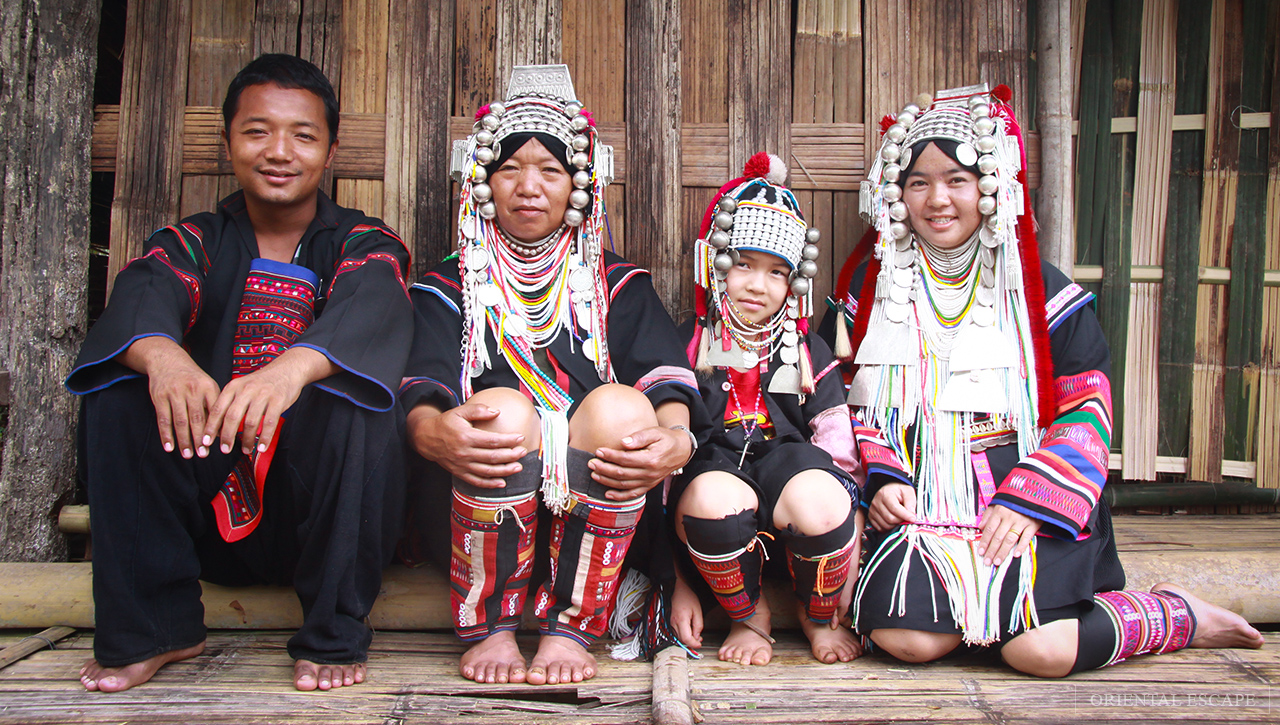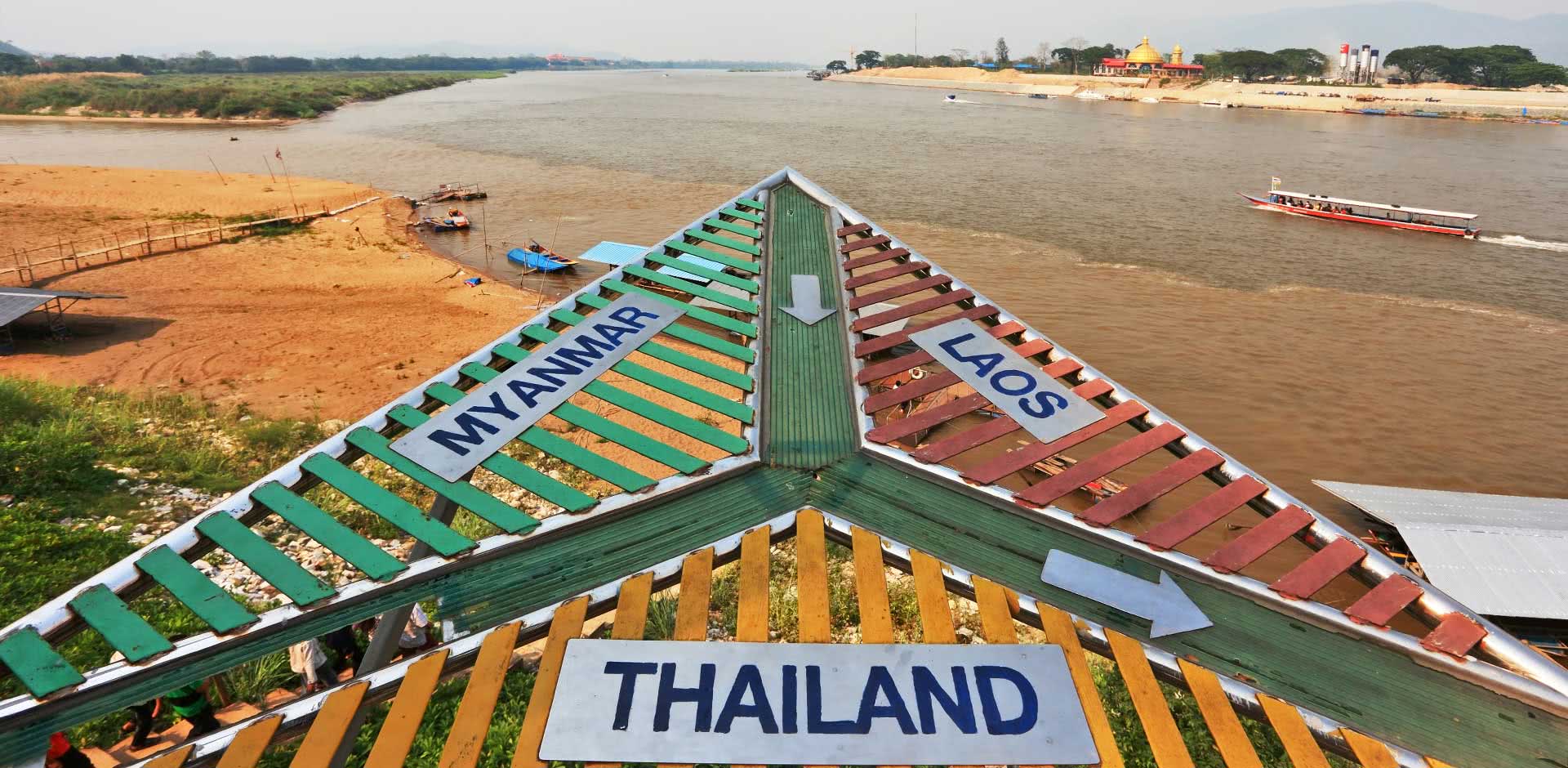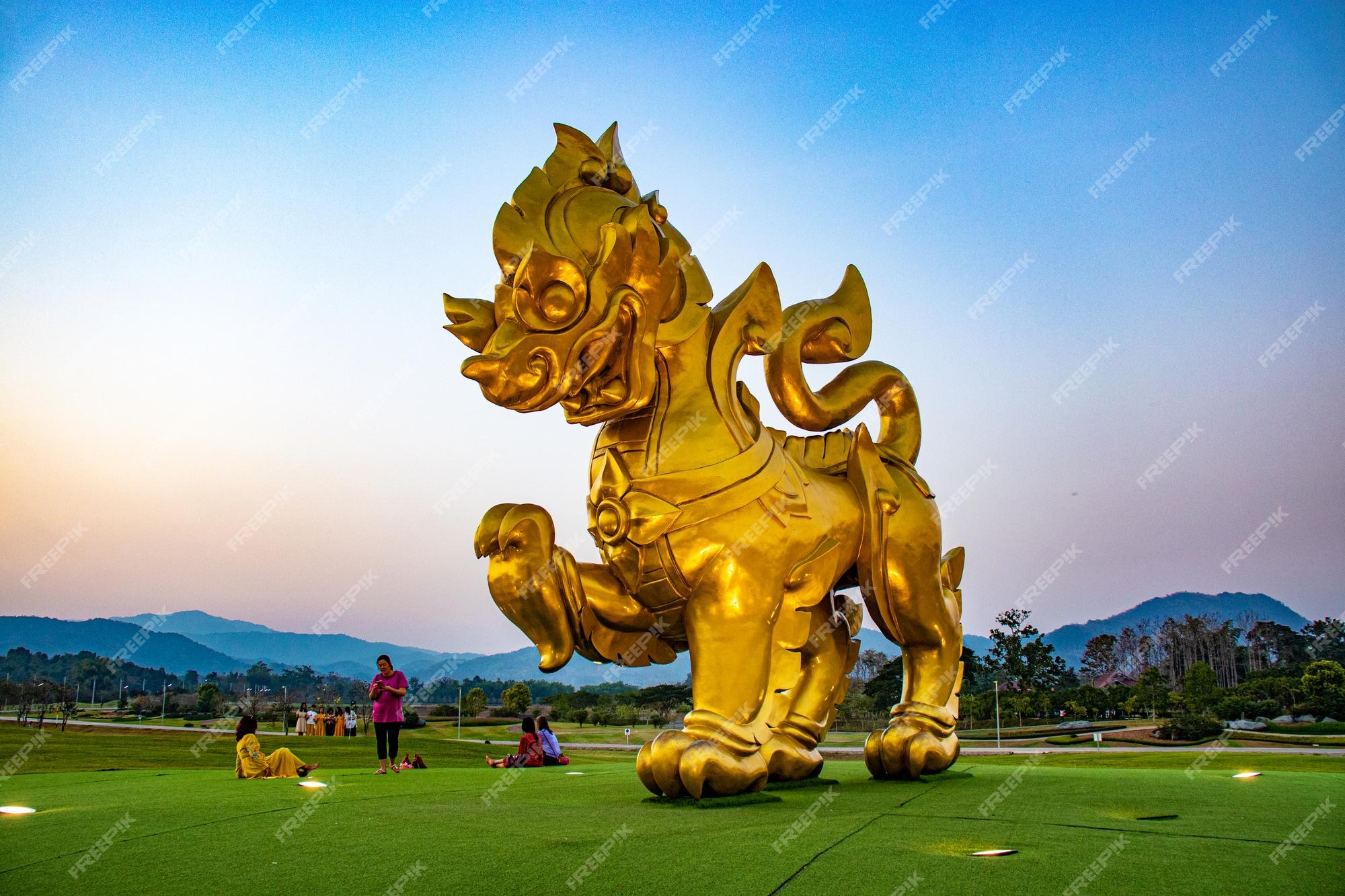Chiang Rai
Chiang Rai Travel Guide: Thailand’s Serene Northern Frontier
Tucked away in Thailand’s far north, around 785 kilometers from Bangkok, Chiang Rai is a province that blends tranquil charm with deep cultural roots. Resting in the scenic Kok River basin at an elevation of about 580 meters above sea level, this peaceful region spans roughly 11,678 square kilometers. As part of the legendary Golden Triangle—where Thailand meets Laos and Myanmar—Chiang Rai is more than just a border town; it’s a fascinating crossroads of cultures, traditions, and timeless landscapes.
Often seen as the quieter, more contemplative sibling to Chiang Mai, Chiang Rai offers a more relaxed pace without skimping on attractions. From misty mountains and ancient ruins to sacred temples and vibrant hill tribe villages, the province is a living museum of both nature and history. Here, visitors can wander through centuries-old settlements, trek through lush jungle trails, and experience the customs of ethnic communities who still preserve their traditional way of life.
Whether you’re an adventurer looking to hike remote trails, a culture-seeker exploring Buddhist shrines, or simply a traveler in search of tranquility, Chiang Rai delivers an authentic Thai experience far from the crowds. As more people discover its peaceful beauty and cultural richness, Chiang Rai is quickly emerging as a must-visit destination for those craving something beyond the beaten path.
Travel Guide
1. Transportation in Chiang Rai
1.1 How to Get to Chiang Rai
The fastest and most convenient way to reach Chiang Rai is by air. Direct flights from Bangkok take just about one hour, with numerous options available from both Don Mueang (DMK) and Suvarnabhumi (BKK) airports. These flights operate frequently throughout the day, making it easy to fit Chiang Rai into any Thailand itinerary.
Alternatively, if you’re coming from Chiang Mai, you can enjoy a scenic three-hour drive through lush landscapes and rolling hills. Buses and private transfers are readily available, offering a comfortable and flexible journey between the two cities.
1.2 Getting Around Chiang Rai
Chiang Rai is a compact and welcoming city that’s easy to explore. Whether you’re wandering its temples or heading out to hilltop viewpoints, a variety of transport options make getting around smooth and stress-free.
Private Car
For the ultimate flexibility—especially if you plan to explore remote temples or countryside areas—a private car is your best bet. Chiang Rai’s mountainous terrain means that many hidden gems are off the beaten path, and having your own vehicle opens the door to lesser-known locations most public transport can’t reach.
Tuk-Tuks & Samlors
Experience local charm by hopping on a tuk-tuk or samlor—iconic modes of Thai transport. Tuk-tuks are small, motorized three-wheelers perfect for short trips around town, while samlors (bicycle rickshaws) offer a slower, nostalgic ride. Great for quick sightseeing jaunts or a relaxed evening cruise through Chiang Rai’s quaint streets.
Bicycle
For active travelers, renting a bicycle is a fun and eco-friendly way to soak in the city’s serene vibe. Pedal through leafy lanes, admire traditional architecture, and even stop by hidden cafes and temples. Just an hour or two on a bike can reveal sides of Chiang Rai you’d miss otherwise.
On Foot
Walking is one of the most rewarding ways to explore the heart of Chiang Rai. The city center is compact, safe, and rich in character—ideal for a sunset stroll or an evening hunt for street food and local handicrafts. Don’t miss the chance to snap photos of illuminated temples or grab a treat at the buzzing night market.
2. Best Time to Visit Chiang Rai
The ideal time to visit Chiang Rai is from October to February, when the weather is delightfully cool and the air refreshingly crisp. Thanks to its elevation (around 1,280 feet above sea level) and surrounding rivers and forests, the city enjoys a cooler climate than much of Thailand.
During this season, daytime temperatures average around 24°C (75°F), while nights can dip to a comfortable 10–15°C (50–59°F)—perfect for cozy evenings and misty mountain mornings. It’s also a fantastic time to explore the outdoors, with clear skies and lush landscapes inviting you to uncover Chiang Rai’s natural beauty.
Places Of Interest
White Temple (Wat Rong Khun) – Where Spirituality Meets Surreal Art
An architectural marvel unlike any other in Thailand, Wat Rong Khun, widely known as the White Temple, feels more like stepping into a dream than visiting a religious site. Conceived and created by visionary Thai artist Chalermchai Kositpipat, this temple near Chiang Rai is not your typical gilded Thai wat. Instead, its brilliant all-white exterior, symbolizing the purity of the Buddha, glistens in the sun with mirrored mosaics embedded into the plaster, casting ethereal reflections from every angle.
What truly sets the White Temple apart is its unapologetically modern twist on Buddhist symbolism. Inside the main hall, you’ll find an unexpected collision of pop culture and spiritual allegory: murals that seamlessly blend figures like Superman, Kung Fu Panda, Mickey Mouse, and even Michael Jackson, alongside fiery depictions of good versus evil.
This isn’t just a place of worship—it’s an evolving piece of conceptual art, blurring the lines between the sacred and the contemporary. Hidden within its details are provocative messages about society, peace, and human struggle—with images like Wolverine’s hand, alien invaders, and even guns transforming into peace signs. It’s a place that sparks both reflection and curiosity.
Located just 15 minutes from Chiang Rai in the village of Ban Tha Klang, Wat Rong Khun is easily accessible by songthaew (shared red truck taxi) for around 50 baht per person, or via a short self-drive from the city. Though it’s approximately 228 kilometers from Chiang Mai, many travelers find it worth the detour for its singular experience.

Blue Temple (Wat Rong Suea Ten): A Modern Marvel in Cerulean and Gold
Tucked away in Chiang Rai’s cultural tapestry, the Blue Temple, officially known as Wat Rong Suea Ten, is a mesmerizing blend of tradition and contemporary artistry. Translating to “Temple of the Dancing Tiger,” the name harks back to a mystical past—legend has it that wild tigers once roamed the grounds of an ancient, long-abandoned temple that once stood here.
Reimagined by a student of Chalermchai Kositpipat (the visionary behind the White Temple), the Blue Temple offers a more serene, accessible experience. Its bold, hypnotic hues—deep sapphire blues trimmed in radiant gold—create a dreamlike atmosphere that feels almost otherworldly. Flanking the temple are striking statues of mythical beings and celestial guardians, setting a majestic tone even before you step inside.
At the heart of the main hall sits a luminous White Buddha, poised in serene meditation, surrounded by swirling murals of modern Buddhist iconography. The artwork is vibrant, fluid, and alive—melding the spiritual with the surreal in ways rarely seen in traditional Thai temples.
While the White Temple dazzles with symbolism and the Black House provokes with its dark intrigue, the Blue Temple invites quiet contemplation and aesthetic awe. It remains one of Chiang Rai’s more peaceful gems—for now. As word spreads, the crowds will follow. So, if you’re seeking that sweet spot between discovery and serenity, this is your moment to visit.

The Hill Tribe Museum & Education Center: An Insightful Cultural Experience in Chiang Rai
Nestled on the 3rd floor of the nonprofit Population & Community Development Association (PDA) building in Chiang Rai, the Hill Tribe Museum & Education Center offers a rare and authentic glimpse into the lives and traditions of Thailand’s diverse hill tribes. With over 18 years of cultural preservation behind it, this modest yet meaningful museum serves as a bridge between the Thai people, international visitors, and six of the country’s major ethnic groups: the Akha, Lahu, Yao, Karen, Lisu, and Hmong.
While the museum’s visuals may appear simple at first glance, the true value lies in the depth and richness of its content. The experience begins with a concise 20-minute introductory slideshow, offering historical context and current challenges faced by these communities. From there, visitors can take a self-guided journey through thoughtfully curated exhibits that explore everything from traditional clothing and bamboo craftsmanship to tribal migration patterns, agricultural tools, and daily life artifacts.
Beyond being just a museum, this space acts as an educational hub—one that fosters understanding, respect, and meaningful cultural exchange. It’s especially valuable for travelers seeking more than surface-level tourism, and for those who want to engage with the social and cultural complexities of Northern Thailand.
Why Visit?
-
Learn about the heritage and resilience of Thailand’s six major hill tribes.
-
Discover traditional clothing, tools, and agricultural practices firsthand.
-
Understand the socio-political issues affecting these indigenous communities.
-
Support a nonprofit initiative promoting cross-cultural understanding.
Whether you’re a history buff, anthropology enthusiast, or a curious traveler, the Hill Tribe Museum offers a thought-provoking and respectful introduction to the rich cultural tapestry of Thailand’s northern highlands.

Discovering the Golden Triangle: Where Three Nations Meet
Nestled in the misty hills of northern Thailand, the Golden Triangle—locally known as Sop Ruak—is a place steeped in legend, history, and striking natural beauty. This captivating region marks the confluence of three countries: Thailand, Laos, and Myanmar, with the mighty Mekong River and Ruak River forming natural borders between them. Once infamous as a hub of the opium trade, the Golden Triangle has transformed into a peaceful cultural crossroad and an emerging eco-tourism destination.
Located just 9 kilometers north of Chiang Saen, the area offers a rare glimpse into the interconnected heritage of three nations. From the main viewpoint, visitors can take in the sweeping panoramas of Laos and Myanmar across calm, winding waters—an experience that is both scenic and symbolic. A photo at the iconic golden Buddha or the triangle marker is a must, with the majestic rivers and borderlands as your backdrop.
One of the best ways to soak in the scenery is by taking a boat trip along the Mekong. A short 20-minute cruise lets you float past lush riverbanks and historic trading routes. For a deeper journey, longer boat rides are available—40 minutes to Chiang Saen or 1.5 hours to Chiang Khong—offering an intimate view of local life along the water.
Beyond the views, the Golden Triangle surprises visitors with coffee plantations, hill tribe villages, and even ethical elephant sanctuaries, where you can interact with these gentle giants in a natural, cruelty-free environment.
Once a name that evoked secrecy and smuggling, the Golden Triangle is now a symbol of transformation—a region where borders dissolve into beauty, and culture flows as freely as the rivers that define it.

Singha Park Chiang Rai: From Barley Fields to a World-Class Agro-Tourism Destination
Once known as Boon Rawd Farm, Singha Park is a shining example of how tradition, nature, and innovation can blend seamlessly. Originally established by the founders of Thailand’s first brewery, the park began as a barley farm used to brew the iconic Singha Beer—a brand that has become a household name not only in Thailand but across the world.
The park’s roots trace back to 1929 when Boon Rawd Brewery was founded by the visionary Bhirom Bhakdi family. Today, it is still proudly operated by the third and fourth generations, who have transformed the former farmland into one of Chiang Rai’s most beloved destinations.
But Singha Park is much more than a legacy site—it’s a vast, beautifully landscaped agro-tourism complex that offers scenic views, adventure activities, tea plantations, ziplining, cycling trails, and seasonal flower gardens. Towering over the landscape is the park’s golden Singha lion statue—a symbol of strength and prosperity rooted in Thai and Southeast Asian mythology, where the Singha (or mythical lion) reigns as King of the Jungle.
Whether you’re sipping on locally grown oolong tea, enjoying a sunset bike ride through lush fields, or learning about the Singha heritage, a visit to Singha Park offers a refreshing mix of nature, culture, and history—all backed by one of Thailand’s most iconic family-run brands.

Mae Salong (Santikhiri): Where Tea, History, and Mountains Meet
High in the misty hills of Chiang Rai’s northwest corner lies Mae Salong, now officially known as Santikhiri, or the “Hill of Peace.” This tranquil village is best known today for its lush tea plantations that cascade down the mountainsides—but its past tells a far more complex and fascinating story.
In the aftermath of the Chinese Civil War in the 1950s, remnants of the defeated Kuomintang army fled southward, eventually finding sanctuary in this remote part of northern Thailand. At the time, the region was infamous for opium cultivation—a trade that many of these exiled fighters initially became entangled with.
However, Mae Salong’s destiny shifted dramatically. Through a remarkable transformation led by Thai authorities and international development projects, the village transitioned from poppies to tea. The once war-torn outpost evolved into a peaceful agricultural haven, with high-quality oolong and green teas gradually replacing narcotics as the lifeblood of the local economy.
Today, Santikhiri offers a unique fusion of cultures—Chinese traditions preserved through generations, stunning alpine landscapes, and the serene rhythm of tea farming. Visitors can wander through terraced plantations, sip freshly brewed teas with panoramic views, and discover a piece of history few other places in Thailand can offer.
More information please contact with Vietnam Marvel Travel for free support

